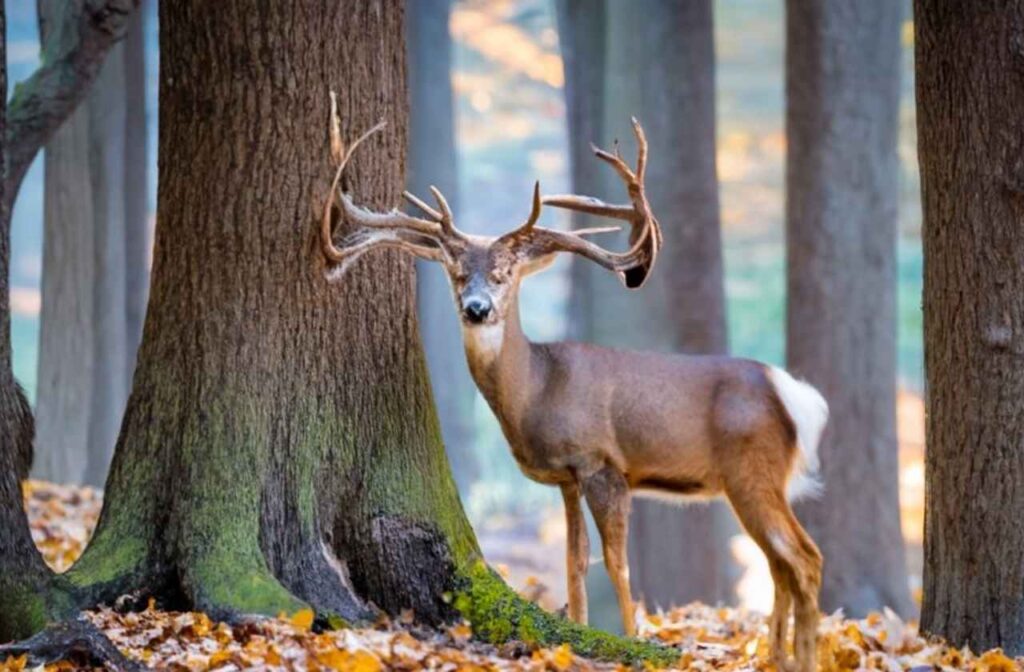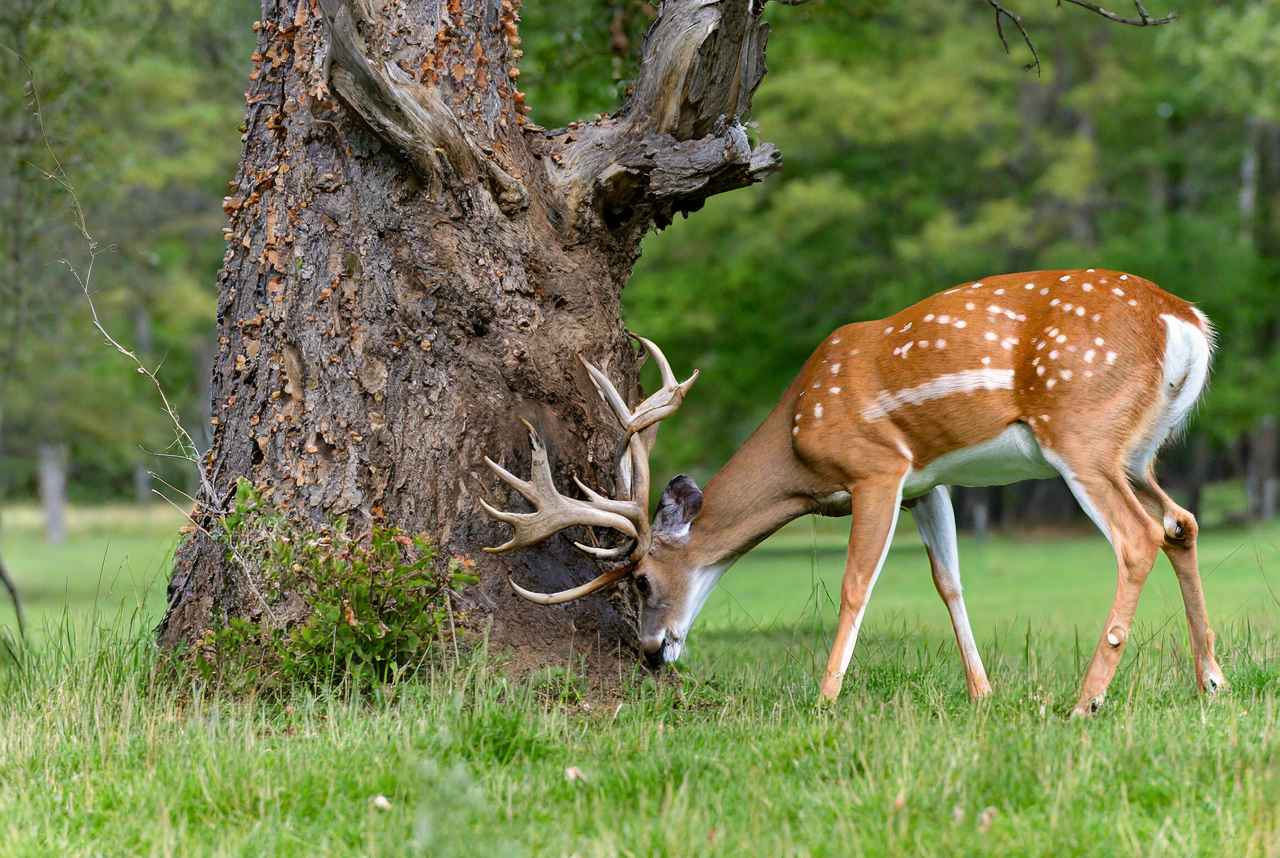Discover the complexity of white-tailed deer’s yearly antler shedding cycle. These popular North American wilderness animals have formidable antlers for protection, dominance, and mating. Why these great buildings are shed annually is the mystery. Exploring white-tailed deer biology reveals a ballet of hormones, survival tactics, and evolutionary adaptations. After mating season, testosterone levels drop, causing antler shedding to save energy and regenerate bigger, stronger antlers. Join us as we explore the science and adaptive benefits behind this yearly phenomena, revealing the complex cycles of life in the natural world.
Why Whitetail Deer Shed Their Antlers?
Every year, whitetail deer, like all other members of the Cervidae family of deer, shed their antlers. Hormone fluctuations cause antler casting, the term for this procedure. Antler loss occurs naturally in whitetail deer each year due to a process called pedicel abscission. The deer’s body begins to produce less testosterone as the mating season draws to a close, which sets off this process. The pedicle, the bone at the base of the antler, weakens and finally breaks as a result of the lower testosterone levels, causing the antler to come off.
The developing antler receives nourishment from the velvet, a protective layer of skin and blood vessels. The velvet dries up and the deer rubs it off as the antler ages. We call this procedure “pedicle rubbing.”
| Aspects | Details |
|---|---|
| 1. Shedding Period | Deer lose their antlers between January and May, depending on where they live. |
| 2. Annual Shedding | White-tailed deer lose their antlers annually in two to three weeks. |
| 3. Antler Growth Cycle | Soft velvet protects antlers, which sprout yearly in April or May. They are shed between January and May, depending on area. |
| 4. Hormonal Changes | Photoperiodism reduces hormone synthesis, notably testosterone, causing deer antler loss via seasonal changes. |
| 5. Health and Environmental Factors | Disease, illness, stress, poor health, injury, and drought may affect deer antler loss. |
For whitetail deer, losing antlers is a natural and healthy process. It enables them to develop a fresh set of antlers for the next mating season and to save energy during the non-breeding season. The deer will have a higher likelihood of successful mating and territorial defense with the bigger and stronger set of antlers compared to its prior set.

Timing of antler shedding
Depending on the specific deer and its environment, antler loss may occur at different times. Deer in warmer regions often lose their antlers before those in colder ones do. Antler shed may also occur sooner than usual in deer who are ill or have been wounded.
A deer’s pedicles will start to repair and become ready for the creation of new antlers once it has lost its antlers. The growing antlers will first form cartilage and then solidify into bone. By the time the mating season reopens, the antlers will have grown to their maximum size during the course of the summer and autumn.
Here are some more details on the casting of antlers by whitetail deer:
- January through May is when antler casting usually takes place.
- Antlers are cast by bucks before does.
- The base of the pedicle bone is where the antler is cast.
- In most cases, the thrown antler remains whole, although predators could scavenge it for sustenance.
- In the spring, a new antler will sprout on the pedicle bone.
The interesting process of antler casting is vital to the survival and well-being of whitetail deer. We may have a greater appreciation for the natural world around us if we comprehend this process.
Frequently Asked Question
Does it hurt when deer shed their antlers?
Deer don’t experience any discomfort throughout the antler-shedding season. The antlers naturally shed near the base, where there is no bone or nerve tissue. Reduced testosterone causes the bone at the base of the antlers to weaken and finally shatter, enabling the deer to shed their antlers without pain.
Why do whitetail deer lose their antlers after the breeding season?
Whitetail deer let off their antlers after mating season as they are no longer needed for protection from predators or for fighting. These antlers are shown by the male deer to show off their authority and draw in possible mates. After the mating season ends, shedding these structures becomes a calculated energy-saving action, since the antlers are no longer functional and enable the deer to effectively preserve energy.
How often do deer shed their antlers?
Antler shed occurs once a year in deer, usually in the late winter or early spring. Depending on the deer species and the area, antler shedding occurs at different times. For instance, red deer in Europe normally shed their antlers between April and June, but white-tailed deer in North America typically do so between January and March.
Do deer antlers fall off every year?
Yes, it is a normal occurrence for deer to lose their antlers once a year. Antlers are dynamic bone structures that grow from a bony protuberance on the deer’s skull called a pedicle. The antler changes after being first coated in velvet, a crucial skin layer that supplies nutrition throughout growth. The antler matures to its full potential when the velvet dries up and sheds freely. The deer parts with its antlers in a smooth, cyclical rhythm in a few of weeks.
What is it called when deer shed their velvet?
Antler polishing is the term for the deer’s velvet shedding process. The deer use this to rub off the remaining skin from their antlers by rubbing them against trees and other surfaces. In order to make the antlers usable and free of any possible parasites or infections, polishing is essential.
Why do deer have antlers?
There are several reasons deer have antlers:
- Fighting: To establish dominance and attract mates, male deer battle with their antlers. The opponent’s head and torso are struck with strikes delivered with the antlers.
- Defense: Antlers are another tool deer utilize for self-defense against predators. When required, the antlers may be utilized to repel predators or to defend oneself.
- Display: Antlers are often used for exhibition purposes. The size and form of a deer’s antlers may provide information about his fitness and overall health. Larger antlered male deer are more appealing to females.
Why do deer shed their velvet?
Deer lose their velvet for several reasons, including to show their bony antlers. This shedding strengthens the antler and removes parasites from the velvet, reducing the chance of illness. Shedding the velvet also triggers a hormonal reaction that promotes antler growth. The shedding of velvet is purposeful and natural, promoting deer health and vigor.
Do moose shed their antlers?
Yes, each year between November and December, moose lose their antlers. The biggest antlers of any deer species, moose antlers may reach a length of six feet. Antlers are used in combat, defense, and show.
- California Deer Hunting Guide: Seasons, Rules, Permits, and More - 26 June 2024
- Arkansas Deer Season 2024 [Schedules, Licenses, Bag Limits & More!] - 26 June 2024
- 2024 Arizona Deer Season New Dates & Rules! - 25 June 2024



